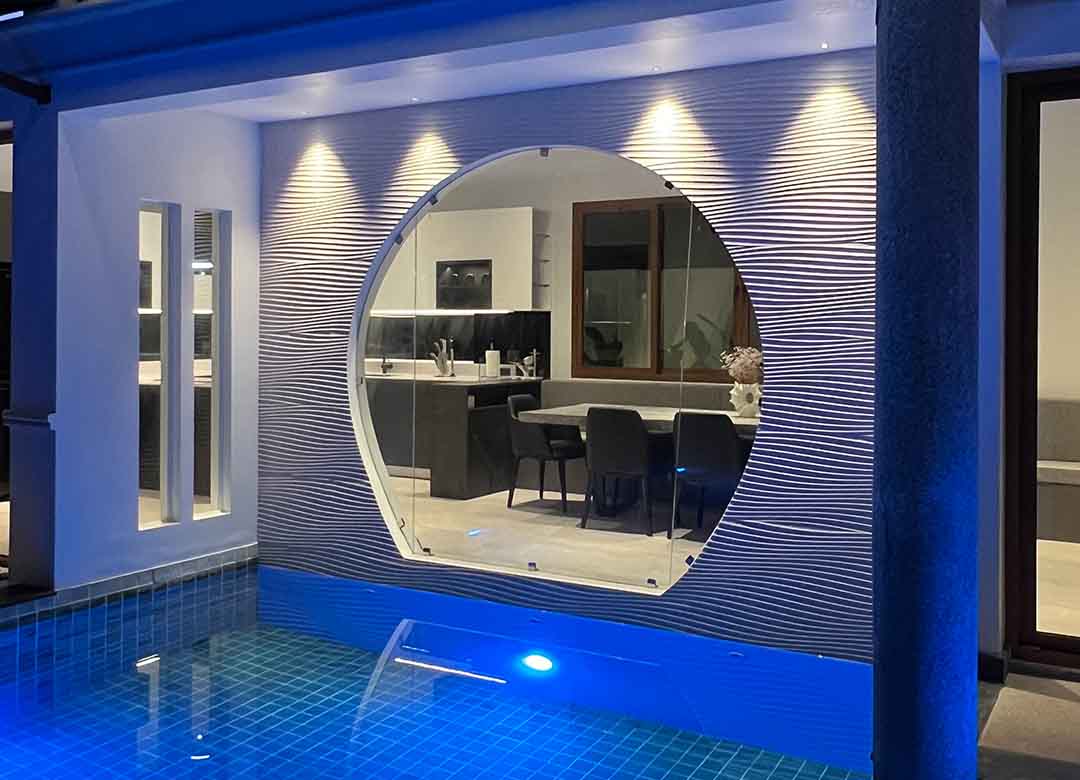
The Amazing World of 3D Ceramic Tiles
Table of Contents
In the ever-evolving realm of interior design, 3D ceramic tiles have emerged as a transformative element, adding depth, texture, and artistic flair to spaces. These tiles transcend traditional flat surfaces, introducing a tactile and visual dynamism that captivates the senses. Whether you’re renovating a cozy apartment or designing a luxurious hotel lobby, 3D ceramic tiles offer a versatile solution that marries functionality with aesthetic appeal.
For those seeking to infuse their spaces with innovative design elements, especially in vibrant cities like Bangkok, exploring the possibilities of 3D ceramic tiles can be a game-changer. Collaborating with experts in Interior Design Bangkok can provide tailored solutions that harmonize with the local culture and contemporary trends.
Key Takeaways:
- 3D ceramic tiles add depth and texture to interiors, enhancing visual appeal and creating dynamic, sophisticated spaces.
- These tiles are versatile and durable, making them suitable for both residential and commercial applications.
- Design trends like fluted and geometric tiles are popular, offering modern and artistic expressions in interior spaces.
- Bangkok’s interior design scene benefits from 3D tiles, blending cultural aesthetics with contemporary styles.
- Proper installation and maintenance ensure longevity, keeping 3D ceramic tiles looking stunning for years.
Understanding 3D Ceramic Tiles
What Are 3D Ceramic Tiles?
3D ceramic tiles are specially crafted tiles that feature three-dimensional patterns or textures, creating an illusion of depth and movement on surfaces. Unlike traditional flat tiles, these designs can range from subtle waves to intricate geometric patterns, offering a unique tactile experience.
How Are They Made?
The production of 3D ceramic tiles involves advanced manufacturing techniques. Typically, a base tile is molded with the desired pattern, followed by glazing and firing processes to achieve the final textured effect. This combination ensures both durability and aesthetic appeal.
The Evolution of Ceramic Tiles
Ceramic tiles have a rich history, dating back thousands of years. Initially used for functional purposes, they have evolved into decorative elements that reflect cultural and artistic trends. The introduction of 3D designs marks a significant milestone, showcasing the industry’s adaptability and innovation.
Advantages of 3D Ceramic Tiles
Aesthetic Appeal
3D tiles add a layer of sophistication to any space. Their textured surfaces play with light and shadow, creating dynamic visual effects that can transform ordinary walls or floors into focal points.
Versatility
Available in various designs, colors, and finishes, 3D ceramic tiles can complement diverse interior styles—from minimalist modern to ornate classic settings.
Durability
Ceramic tiles are known for their longevity and resistance to wear and tear. The 3D variants maintain these qualities, making them suitable for high-traffic areas.
Applications in Modern Interiors
Residential Spaces
In homes, 3D ceramic tiles can be used to accentuate feature walls, kitchen backsplashes, or bathroom interiors, adding character and depth to personal spaces.
Commercial Settings
Businesses, hotels, and restaurants utilize 3D tiles to create memorable environments. For instance, a hotel lobby adorned with textured tiles can leave a lasting impression on guests.
Design Inspirations and Trends
Fluted Tiles
Fluted tiles, characterized by their vertical or horizontal grooves, are gaining popularity. They offer a subtle yet impactful texture, suitable for both contemporary and traditional designs. According to recent trends, fluted tiles are set to be a prominent choice for backsplashes in 2025.
Geometric Patterns
Bold geometric designs provide a modern edge, allowing for creative expressions that can redefine a space’s ambiance.
Nature-Inspired Textures
Tiles mimicking natural elements like waves, sand dunes, or foliage bring an organic feel to interiors, promoting a sense of tranquility.
Incorporating 3D Tiles in Bangkok Interiors
Bangkok, a city where tradition meets modernity, offers a unique canvas for interior design. Integrating 3D ceramic tiles into Bangkok interiors can reflect this blend, harmonizing with the city’s vibrant culture and contemporary lifestyle.
Local Design Studios
Collaborating with local design studios, such as Instyle Deco Paris, can provide tailored solutions that resonate with the Bangkok aesthetic. Their expertise in 3D design rendering services ensures that the tiles complement the overall design vision.
Cultural Sensitivity
Incorporating patterns or textures inspired by Thai art and architecture can create a cohesive and culturally enriched interior space.
Installation Considerations
Surface Preparation
Proper surface preparation is crucial for the successful installation of 3D tiles. Ensuring a flat and clean substrate will prevent issues like unevenness or tile detachment.
Professional Installation
Given the complexity of aligning patterns and textures, hiring experienced installers is recommended to achieve the desired outcome.
Maintenance and Durability
Cleaning
Regular cleaning with non-abrasive cleaners will maintain the tiles’ appearance. It’s essential to avoid harsh chemicals that could damage the glaze or texture.
Longevity
With proper care, 3D ceramic tiles can retain their beauty and functionality for decades, making them a worthwhile investment.
Sustainability and Eco-Friendly Options
As sustainability becomes a focal point in design, many manufacturers are producing eco-friendly 3D ceramic tiles. Utilizing recycled materials and energy-efficient production methods reduces the environmental footprint.
Future Prospects of 3D Ceramic Tiles
The future of 3D ceramic tiles looks promising, with continuous innovations in design and technology. As designers and consumers seek unique and personalized spaces, the demand for such tiles is expected to grow, leading to more diverse and customizable options.
3D ceramic tiles have revolutionized interior design by offering a harmonious blend of form and function. Their ability to add depth, texture, and visual interest makes them a valuable asset in creating captivating spaces. Whether in Bangkok or beyond, embracing this trend can lead to interiors that are both timeless and contemporary.
Are 3D ceramic tiles suitable for outdoor use?
Yes, many 3D ceramic tiles are designed to withstand outdoor conditions, including moisture and temperature changes. However, it’s essential to select tiles rated for exterior use, as they are more resistant to weather damage, fading, and wear, ensuring long-term durability.
Do 3D tiles require special maintenance compared to regular tiles?
3D ceramic tiles don’t require extensive maintenance beyond regular cleaning. However, their textured surfaces may accumulate dust or grime more easily. Using a soft brush or non-abrasive cleaner helps maintain their appearance without damaging the intricate patterns or glaze.
Are 3D ceramic tiles suitable for outdoor use?
Yes, 3D tiles can enhance small spaces by adding depth and visual interest. Opting for subtle patterns or light-colored tiles prevents the space from feeling cramped while creating a stylish accent, making rooms appear more spacious and sophisticated.





